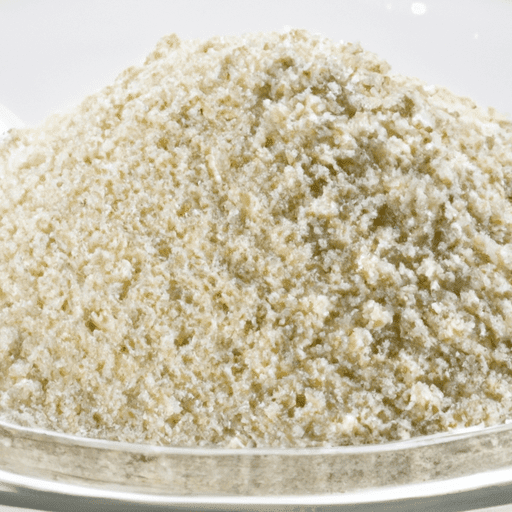Going Gluten-Free with Breadcrumbs: A Delicious Twist on a Classic Ingredient
If you follow a gluten-free diet or have a sensitivity to gluten, you may have thought that your days of indulging in crispy, golden-brown breadcrumbs were behind you. But fear not! Gluten-free breadcrumbs are here to save the day and add a delightful crunch to all your favorite dishes.
Taste and Texture Worth Savoring
Gluten-free breadcrumbs offer a taste and texture that will surely satisfy even the most discerning palates. Made from alternative grains such as rice, corn, or quinoa, these breadcrumbs are light and airy, providing a perfect contrast to any dish. Whether you use them as a coating for fried chicken, a topping for macaroni and cheese, or as a binder in meatballs, gluten-free breadcrumbs deliver a crispy and delicious experience.
Versatile Culinary Companions
Gluten-free breadcrumbs are incredibly versatile and can be used in a wide range of dishes. They can replace traditional breadcrumbs in almost any recipe, allowing you to enjoy your favorite foods without sacrificing flavor or texture. From stuffing for Thanksgiving turkey to coating for fish fillets, gluten-free breadcrumbs can do it all. They add a delightful crunch to casseroles, meatloaf, and even vegetarian dishes like zucchini fritters or stuffed mushrooms. The possibilities are endless!
Nutritional Benefits to Savor
In addition to being a fantastic substitute for traditional breadcrumbs, gluten-free breadcrumbs also offer some noteworthy nutritional benefits. Alternative grains used in their production often boast higher protein content and an array of essential vitamins and minerals. Additionally, since gluten-free breadcrumbs are commonly made from whole grains, they contribute to a more balanced diet, promoting better digestion and a healthier lifestyle.
A Brief History of Gluten-Free Breadcrumbs
Breadcrumbs themselves have a long-standing history, having been used for centuries in cooking across various cultures. The concept of gluten-free breadcrumbs, however, is more recent. As the demand for gluten-free products has grown, innovative food companies and home cooks alike have developed creative ways to adapt classic recipes. Gluten-free breadcrumbs emerged as a necessary solution for those seeking to enjoy beloved dishes without the adverse effects of gluten.
Fun Facts about Gluten-Free Breadcrumbs
Did you know that many gluten-free breadcrumbs are not just wheat-free, but also dairy-free and vegan? This makes them a perfect option for individuals with multiple dietary restrictions.
Breadcrumbs are not only a staple in savory dishes but can also be used in desserts. Gluten-free breadcrumb crusts add a delightful twist to cheesecakes and fruit pies.
Making your own gluten-free breadcrumbs at home is simple and cost-effective. All it takes is a food processor and some gluten-free bread of your choice. Plus, you can customize the flavor by adding herbs, spices, or even a hint of parmesan cheese alternative.
So, whether you’re following a gluten-free diet, have gluten sensitivities, or simply want to explore new flavors, gluten-free breadcrumbs open the door to a world of culinary possibilities. From crispy coatings to add-ons for your favorite casseroles, they are a game-changer. So go ahead, think outside the breadbox, and give gluten-free breadcrumbs a try! Your taste buds will thank you.
Note: Before consuming any gluten-free product, always ensure that they are certified gluten-free and produced in a dedicated gluten-free facility to avoid cross-contamination.
Interesting Facts About Gluten-Free Breadcrumbs
Origin: Breadcrumbs have been used in cooking for centuries, primarily made from wheat-based bread. However, with the rise in gluten intolerance and the popularity of gluten-free diets, gluten-free breadcrumbs have gained popularity.
Common Uses: Gluten-free breadcrumbs are widely used as a substitute for traditional breadcrumbs in various recipes. They serve as a binding agent, adding texture and helping to thicken and hold together ingredients in dishes like meatballs, meatloaf, veggie burgers, and casseroles. They can also be used as a coating for frying or baking foods.
Nutritional Benefits: Gluten-free breadcrumbs are typically made from alternative grains, legumes, or vegetables, providing diverse nutritional benefits. For example, bread may be made from rice, corn, quinoa, or chickpeas, offering various nutrients such as fiber, protein, vitamins, and minerals.
Unique Properties: Gluten-free breadcrumbs have a different texture compared to traditional breadcrumbs. They can be coarser or lighter, depending on the ingredients used. Gluten-free breadcrumbs also tend to absorb moisture more quickly, making them useful in recipes that require moisture to be retained or to prevent foods from becoming soggy.
Historical Significance: The demand for gluten-free breadcrumbs has increased with the growing awareness of celiac disease and gluten sensitivity. Celiac disease, an autoimmune disorder triggered by gluten consumption, affects around 1% of the global population. The development of gluten-free breadcrumbs has allowed individuals with gluten-related dietary restrictions to enjoy dishes traditionally made with gluten-containing breadcrumbs.




Use the share button below if you liked it.
It makes me smile, when I see it.